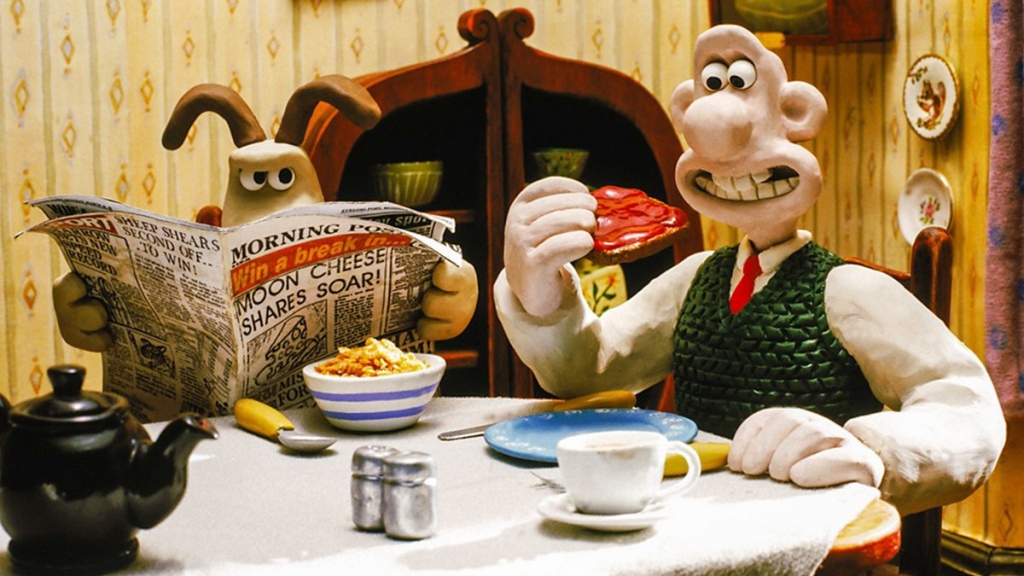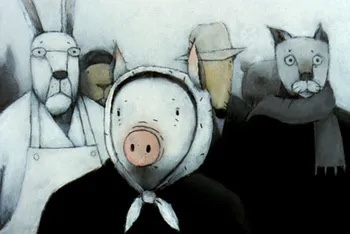The Wrong Trousers (Nick Park, 1993) is a 29-minute stop-motion animated short film which features the iconic duo Wallace and Gromit. The film’s plot entails Wallace letting out a room to a nefarious penguin, who attempts to use Wallace’s new invention, the ‘Techno-Trousers’ in order to steal a diamond from the city museum. Due to this being the second short film in which Wallace and Gromit feature, the film is able to waste no time in introducing the eccentric duo to the viewer. Utilising a linear three act structure and conforming to the conventions of the comedy/action genre, Park successfully creates a heartwarmingly enjoyable short film.

The key to Wallace and Gromit’s success is the synergistic dichotomy between the duo. Loosely based on Park’s father, Wallace is a humble, good-natured inventor, whereas Gromit is depicted as much more mature, thoughtful and intelligent despite being unable to speak. Through this, the scene where Gromit leaves Wallace after the penguin occupies his room instills a dramatic emotional response in the viewer, exacerbated by a particularly mournful non-diegetic score.
Park creates tension throughout the film using a variety of closeup tracking shots in tandem with the aforementioned orchestral score. For example, during the heist scene, the penguin accidentally drops the diamond. To create tension, Park cuts between a closeup of the diamond and a closeup of the penguin’s alarmed expression, during which the orchestra plays stab chords at strikingly forte dynamics which immediately focuses the viewer’s attention. The POV shot of the penguin edging closer towards Gromit in the box is also particularly tense, due to the filmmaker’s choice to make the penguin’s diegetic footsteps the only sound discernible in the mix.
The style of animation featured throughout the film is also of particular importance. Aardman’s signature ‘clay-mation’ style of stop-motion filmmaking means that each frame of the film is precisely constructed. Due to this, Park is essentially allowed total creative freedom in terms of mise-en-scène – the discernibly metallic texture of the ‘Techno-Trousers’ juxtaposes every other object in the film, reinforcing the fact that it is highly advanced technology. The clay models also allow for Gromit to communicate entirely through gesture and body language.
Personally, I thoroughly enjoyed The Wrong Trousers and possess a bountiful amount of nostalgia for the film. Park’s unique style of animation alongside meaningful character and plot development result in a highly enjoyable short film experience. In my opinion, the film exceeds the likes of When the Day Breaks in terms of what an animated short is able to achieve. The film demonstrated to me the effectiveness of an appropriate score in building atmosphere and tension.

You must be logged in to post a comment.